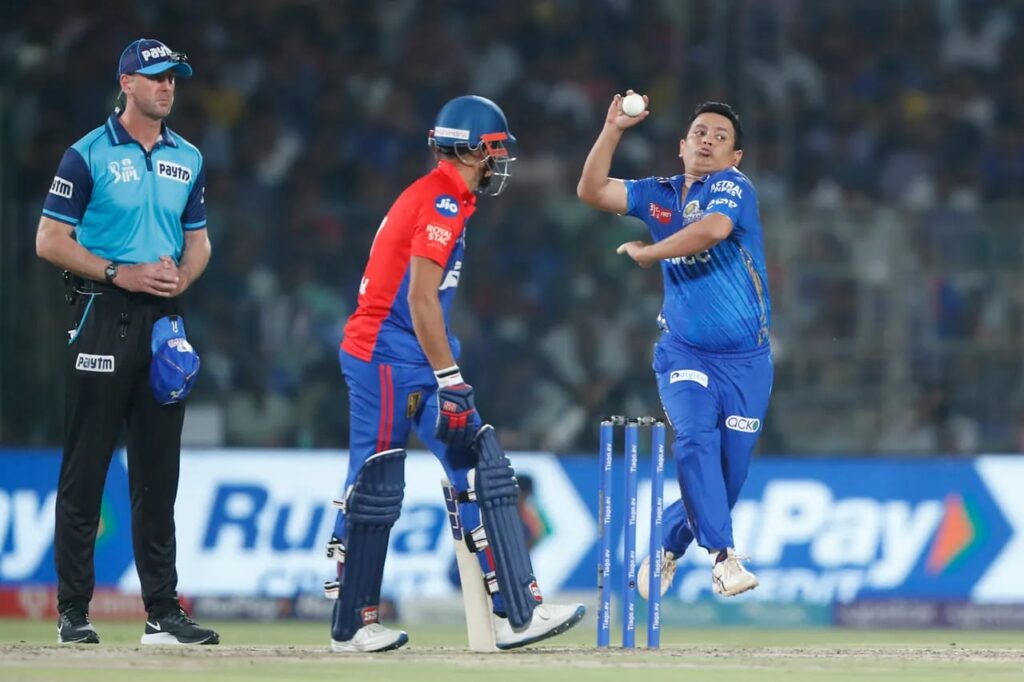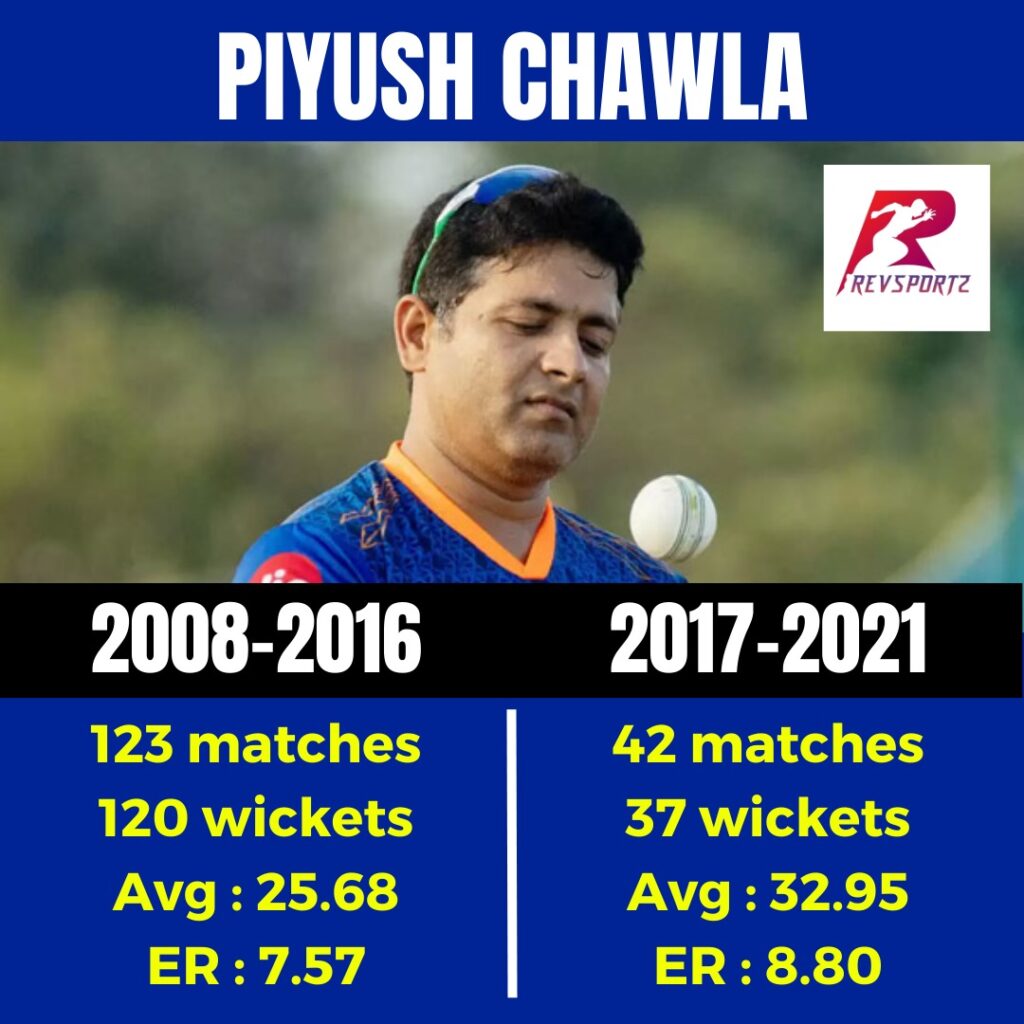
Mention Piyush Chawla to the casual cricket fan, and the response you’re likely to get will be on the lines of: “Oh? Is he still around?” It’s now over a decade since Chawla won the last of his 35 India caps, and more than seven seasons since he was even considered a contender for a comeback. In 2022, his Indian Premier League season was spent in the commentary box and not on the field. But this man, with the eternally youthful face, can still bowl a googly to telling effect, as the Delhi Capitals discovered to their cost on Tuesday night.
There are 12 players currently scattered across the ten squads who were also part of the IPL’s inaugural season in 2008. Of those, only Dinesh Karthik and MS Dhoni made their India debuts before Chawla did. When he played his first Test against England at Mohali in 2006, he had just turned 17, and one of the veterans of the English press pack said dryly: “I hope he’s got permission from his head teacher to skip school!”
Back then, only those that followed junior cricket in Delhi knew of Virat Kohli. Rohit Sharma was an Under-19 prospect. Even Dhoni was being labelled Show Pony by the English media, with the Captain Cool days far in the future. Chawla, however, was the flavour of the season. At 16, he had bowled Sachin Tendulkar with a googly in a Challenger Trophy game. His freshman year in first-class cricket saw Uttar Pradesh win the Ranji Trophy for the first (and only) time in their history.
But Indian cricket has a chequered history with talented leg-spinners who make a big first impression. Laxman Sivaramakrishnan wasn’t yet 19 when he took 19 wickets in his first two home Tests. He played his last at the ripe old age of 20. Narendra Hirwani was also 19 when he destroyed the mighty West Indies with 16 wickets in a Chepauk Test, prompting the great Viv Richards to growl: “One swallow doesn’t a summer make.” In his remaining 16 Tests, spread across nine seasons, Hirwani took 50 wickets.
Chawla’s problem was partly that he wasn’t Siva or Hirwani. Both could really rip the leg-break, the stock delivery, and in Siva’s case, the loop was gorgeous and deceptive. No less a person than Richie Benaud nearly jumped out of his seat in excitement when he drew Javed Miandad forward and had him stumped in the final of the World Championship of Cricket (1985).
Chawla had a superb googly, but the purists frowned at his lack of a consistent stock ball. Remember that by this time, Shane Warne – as much showman as he was a magnificent bowler – had made leg-spin the ultimate in cricket cool. If you couldn’t rip it like him, you were always going to be judged harshly.

Still, despite Amit Mishra, a much more classical leg-spinner, overtaking him in the Indian pecking order, Chawla carved out a decent career for himself. He last played for India in the fortnight before his 24th birthday – both in Tests and T20Is – but there were enough highlights in the early years of the IPL. After six seasons and 84 wickets for Kings XI Punjab, he moved to Kolkata Knight Riders and promptly won the title in his first season there.
What’s more, he struck the winning runs in an epic final where KKR chased down a target of 200. After his five-ball cameo of 13, he famously said, “One four, and the whole world now knows that Piyush Chawla can bat.” It was also part-response to the constant criticism that he had become more of a batsman in domestic cricket.
With the Ranji Trophy played in the north Indian winters, and UP having unearthed a golden generation of pacers – RP Singh, Praveen Kumar, Bhuvneshwar Kumar and Sudeep Tyagi all played for India – spin was almost an afterthought on pitches that offered little for the slow bowlers. As he disappeared off the selectors’ radar, the cricketing public started to view Chawla almost as an IPL specialist.
But even there, the wickets dried up. By the end of the 2016 season, only three bowlers had taken more IPL wickets than Chawla’s collection of 120. Lasith Malinga, perhaps the most lethal bowler in the competition’s history, was out in front with 143, but Dwayne Bravo (122) and Mishra (124) were only just ahead of him. Those behind Chawla in the wicket-takers’ table included Harbhajan Singh (119) and R Ashwin (100), both of whom have enjoyed legendary careers.
Over the next five seasons, batsmen started to line Chawla up and take him on far more than they had done before. His economy-rate ballooned to nearly nine in that period, and there were only 37 wickets in 42 matches. When he didn’t find any takers before the 2022 season, there were no murmurs of surprise.
The game-turning spell against Delhi was Chawla’s 13th three-wicket haul in the IPL. Dreams of playing for India are long gone, but in Rohit Sharma, he has a captain who has seen him at close quarters since they were both teenagers. Chawla may not play every game, but he showed against Delhi, especially with the dismissal of Rovman Powell, that the googly is still good enough for any highlights reel.
It was never going to be easy for any Indian leg-spinner to follow in Anil Kumble’s footsteps. Chawla, even if he’s frustrated by the abbreviated nature of his international career, has a lot to look back on and be proud of. And there are still a few tricks up that sleeve. Rohit and the Mumbai Indians may just be the beneficiaries as the ‘truant schoolboy’ writes his final chapters.



